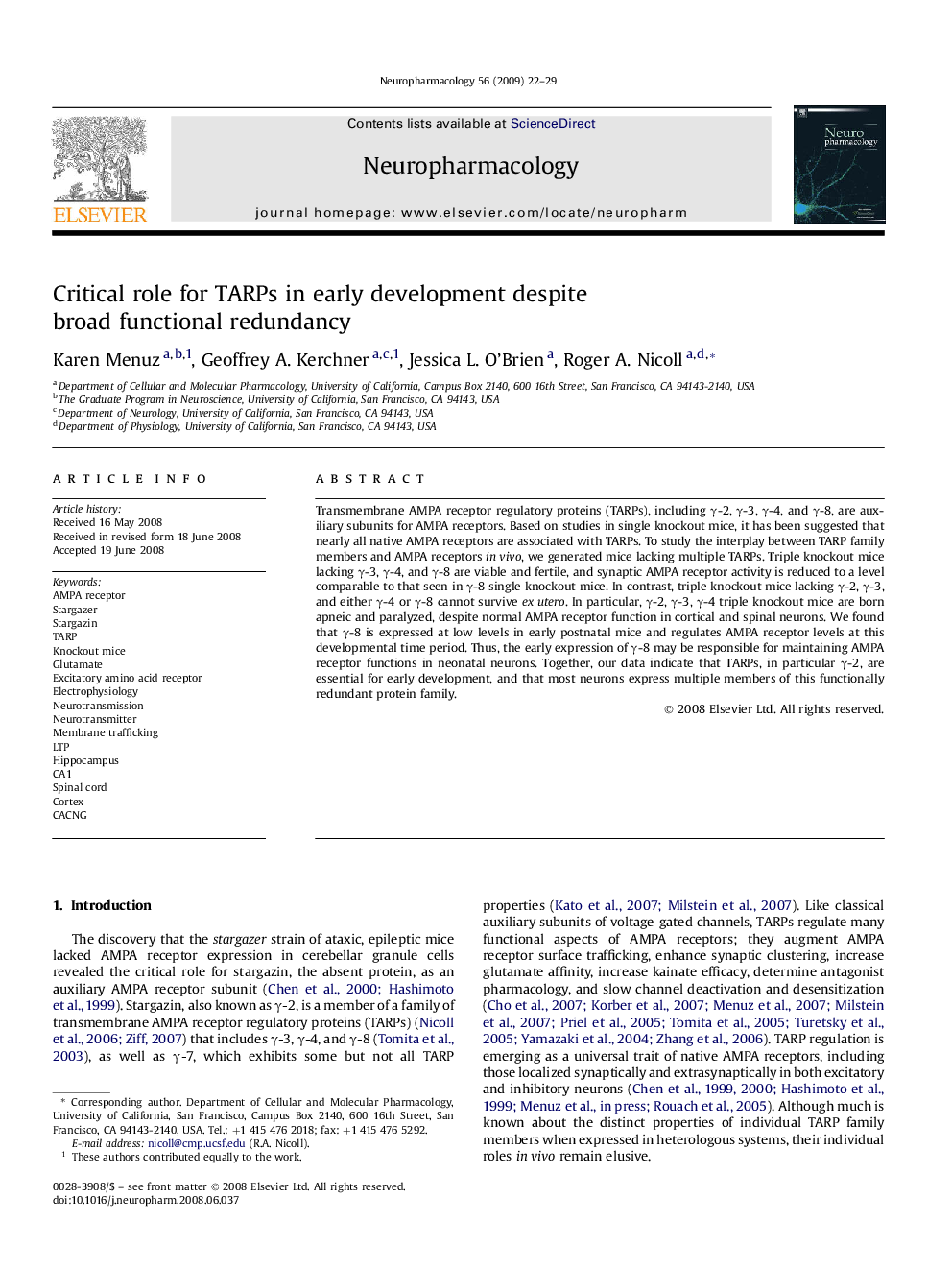| Article ID | Journal | Published Year | Pages | File Type |
|---|---|---|---|---|
| 5816149 | Neuropharmacology | 2009 | 8 Pages |
Abstract
Transmembrane AMPA receptor regulatory proteins (TARPs), including γ-2, γ-3, γ-4, and γ-8, are auxiliary subunits for AMPA receptors. Based on studies in single knockout mice, it has been suggested that nearly all native AMPA receptors are associated with TARPs. To study the interplay between TARP family members and AMPA receptors in vivo, we generated mice lacking multiple TARPs. Triple knockout mice lacking γ-3, γ-4, and γ-8 are viable and fertile, and synaptic AMPA receptor activity is reduced to a level comparable to that seen in γ-8 single knockout mice. In contrast, triple knockout mice lacking γ-2, γ-3, and either γ-4 or γ-8 cannot survive ex utero. In particular, γ-2, γ-3, γ-4 triple knockout mice are born apneic and paralyzed, despite normal AMPA receptor function in cortical and spinal neurons. We found that γ-8 is expressed at low levels in early postnatal mice and regulates AMPA receptor levels at this developmental time period. Thus, the early expression of γ-8 may be responsible for maintaining AMPA receptor functions in neonatal neurons. Together, our data indicate that TARPs, in particular γ-2, are essential for early development, and that most neurons express multiple members of this functionally redundant protein family.
Keywords
Related Topics
Life Sciences
Neuroscience
Behavioral Neuroscience
Authors
Karen Menuz, Geoffrey A. Kerchner, Jessica L. O'Brien, Roger A. Nicoll,
